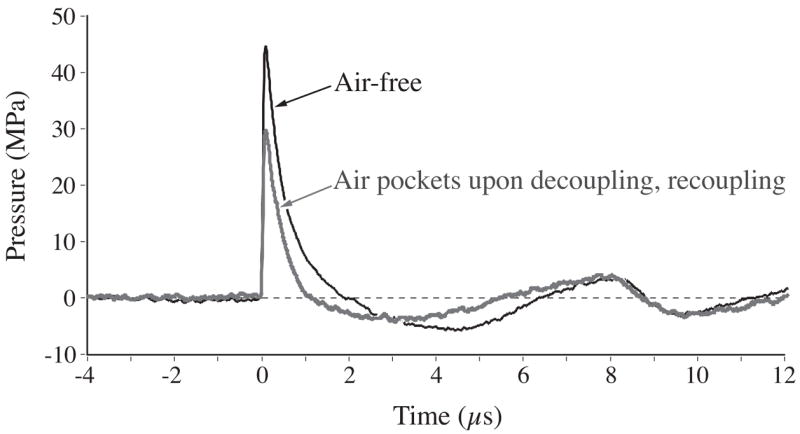Fig. 2.

Temporal profiles of lithotripter shock waves recorded with and without air pockets trapped at the coupling interface. This compares the quality of coupling achieved by manual removal of air pockets versus decoupling/re-coupling (photographs of the corresponding coupling conditions are shown in the left and right columns of Fig. 3). Shock waves were recorded by fiber-optic hydrophone positioned at the geometric focus of the lithotripter. Each waveform is an average of 60 shock waves fired at power level 3, and a rate of 60 SW’s/min. The presence of air at the coupling interface reduced shock wave amplitude by about 32%, and total transmitted energy was reduced by about 57%.
